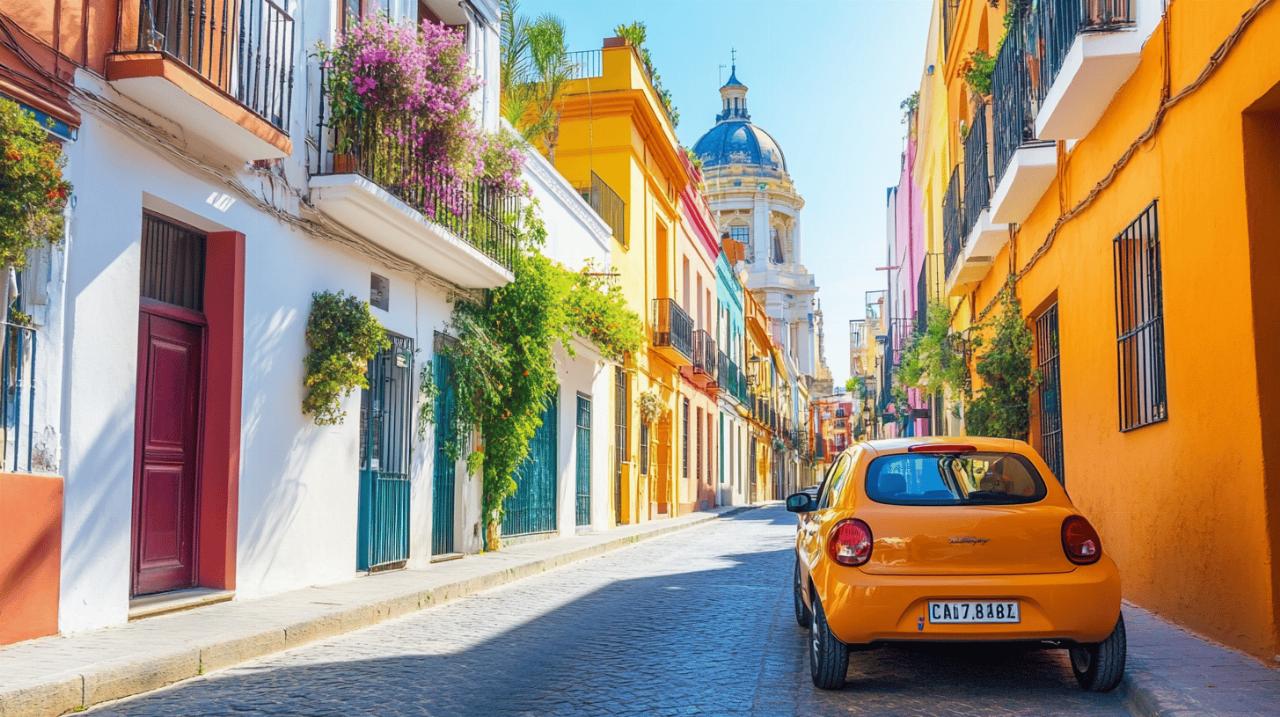Planning a Spanish road trip demands smart budgeting for toll roads while finding economical car rental options. Spain's extensive highway network offers both convenience and cost considerations that travelers should prepare for before setting off on their journey.
Strategic Planning for Toll Roads in Spain
Spain boasts over 17,000km of motorways with approximately 30% being toll roads known as 'autopistas de peaje,' marked with 'AP' in their designation. These premium routes offer faster travel times and less congestion than their free counterparts ('autovías'), but require financial planning to avoid unexpected expenses during your Spanish driving adventure.
Mapping major toll routes across spanish regions
Spain's toll network connects major cities and tourist destinations through key routes like the AP-7 from La Jonquera to Valencia (costing around €40.85 for the 351km journey) and the AP-9 running from Ferrol to Vigo (charging about €19.50 for 180km). The cost structure typically averages €1 per 8-11 kilometers depending on the region. When planning your journey, consider that the Barcelona to Zaragoza route on AP-2 costs approximately €25, while the Malaga to Marbella stretch on AP-7 runs about €9. Many travelers find valuable information about these routes and pricing on https://www.elrinconcunqueiru.com/ where detailed guides help visitors navigate Spain's extensive road system.
Electronic payment options to avoid cash premiums
To maximize efficiency on Spanish toll roads, explore electronic payment alternatives to cash transactions. The VIA-T electronic system allows seamless passage through toll gates without stopping, saving both time and potential currency exchange fees. Rental companies often provide VIA-T devices for approximately €4.50 plus €0.25 per day—an investment that quickly pays off when traveling extensively on toll roads. Some regions operate 'shadow tolls' where the government covers costs, while others maintain traditional booth systems accepting credit cards and cash. Most toll plazas offer touchscreen options in English for international travelers, making payments straightforward even without Spanish language skills.
Smart rental strategies for budget-conscious travelers
Planning a Spanish road trip requires smart budgeting, especially when considering toll roads. Spain boasts over 17,000km of motorways with approximately 30% being toll roads (Autopistas), while Autovías remain untolled. Booking your rental car strategically can make a significant difference to your travel budget, allowing you to explore Spain's diverse landscapes and lesser-known sights without breaking the bank.
When renting a car in Spain, bring reflective jackets and a warning triangle to avoid fines. Consider that toll roads typically cost about €1 per 8 kilometers, with major routes like Barcelona to Valencia (AP-7) costing approximately €40.85. While toll roads offer higher speed limits (120 km/h) and less congestion, free alternatives provide more scenic routes through towns and villages.
For payment, toll roads accept cash, credit/debit cards, and electronic VIA-T devices (rentable for €4.50 plus €0.25 daily). Look for roads marked with 'AP' or 'PEAJE' signage to identify toll routes. Speed limits vary: 50 km/h in urban areas, 90-100 km/h on national roads, and 120 km/h on highways.
Comparing local vs. international rental companies
Choosing between local Spanish rental agencies and international companies can significantly impact your budget. Local companies like Centauro often offer competitive rates compared to global brands. Using comparison platforms such as EasyTerra helps identify the best deals across multiple providers.
Sign up for newsletters from car rental platforms, which can provide discounts up to 40%. When comparing companies, look beyond the base price. Local firms might offer all-inclusive insurance packages that prevent unexpected fees later, while international companies might have more pickup locations but higher prices.
Evaluate fuel policies carefully—some local companies offer full-to-full policies that save money compared to prepaid fuel options from international firms. For toll road convenience, ask if the rental includes or offers a VIA-T electronic device, which saves time and sometimes money by avoiding manual toll booths on autopistas.
Timing your booking for maximum savings
Booking your car rental in advance is crucial for securing the best rates in Spain. Reservations made up to 8 months ahead can lead to significant savings, with prices typically rising as your travel date approaches. The ideal booking window starts around 3-6 months before your trip.
Rental prices fluctuate seasonally in Spain, with summer months (June-August) and major holidays seeing substantial price increases. Traveling during shoulder seasons (April-May or September-October) can reduce your rental costs by 20-30% while still enjoying pleasant weather.
When timing your booking, consider vehicle availability. Automatic transmissions are less common in Spain and require early reservation. Smaller cars not only secure better rates but also save on fuel costs and make navigating narrow Spanish streets easier. For city exploration, consider renting cars only for specific portions of your trip and using public transportation within major cities to avoid parking fees, which can range from €2 per day in smaller towns to €25+ daily in Madrid or Barcelona.



